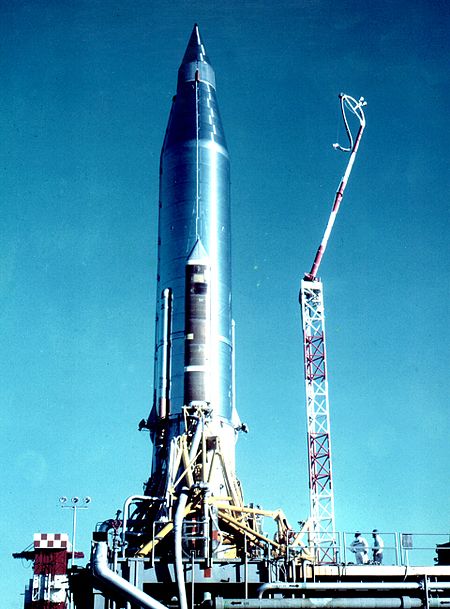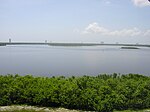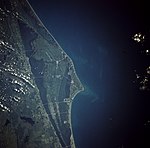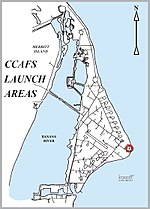Cape Canaveral Launch Complex 11

Launch Complex 11 (LC-11) at Cape Canaveral Space Force Station, Florida, is a launch complex used by Atlas missiles between 1958 and 1964. It is the southernmost of the launch pads known as Missile Row. When it was built, it, along with complexes 12, 13 and 14, featured a more robust design than many contemporary pads, due to the greater power of the Atlas compared to other rockets of the time. It was larger, and featured a concrete launch pedestal that was 6 metres (20 ft) tall and a reinforced blockhouse. The rockets were delivered to the launch pad by a ramp on the southwest side of the launch pedestal. Thirty-two Atlas B, D, E and F missiles were launched on suborbital test flights from LC-11. The first launch to use the complex was Atlas 3B, the first flight of a complete Atlas, which was launched on 19 July 1958. In addition to the suborbital tests, one orbital launch was conducted from the complex. On 18 December 1958, Atlas 10B launched SCORE, the world's first communications satellite, into low Earth orbit. The area of LC-11 is currently leased to Blue Origin.
Excerpt from the Wikipedia article Cape Canaveral Launch Complex 11 (License: CC BY-SA 3.0, Authors, Images).Cape Canaveral Launch Complex 11
Central Control Road,
Geographical coordinates (GPS) Address Nearby Places Show on map
Geographical coordinates (GPS)
| Latitude | Longitude |
|---|---|
| N 28.475555555556 ° | E -80.540555555556 ° |
Address
Space Launch Complex 36 (New Glenn launch pad)
Central Control Road
Florida, United States
Open on Google Maps









